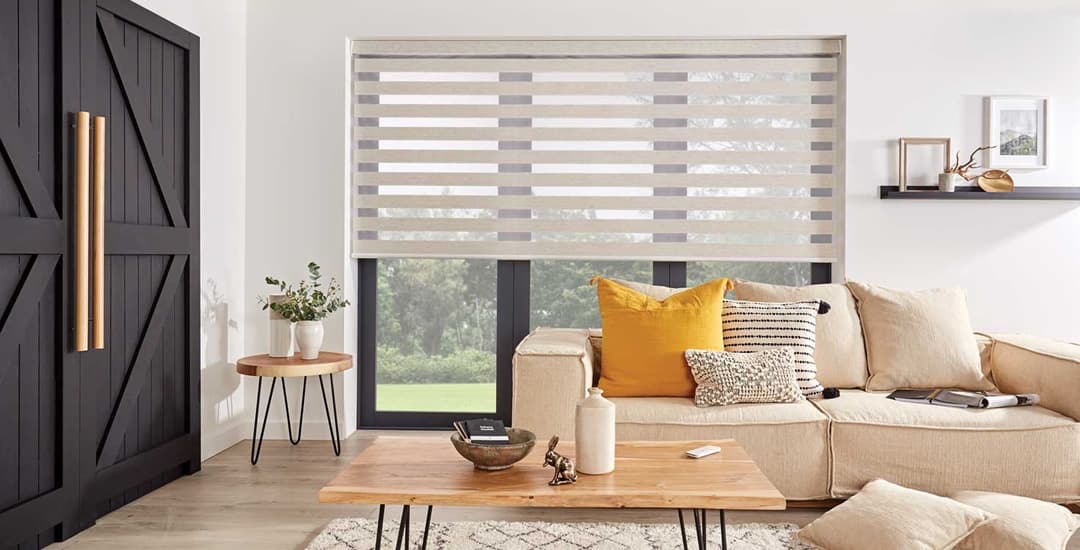
Are day and night blinds blackout? Not in the true sense of the word “blackout,” nor in the spirit of what we take the word to mean when referring to blinds. However, given that you might actually see some day and night blinds purporting to be blackout blinds offered for sale at some point and because day and night blinds are fairly new and not everyone knows how they work, I will talk about this in more detail within this blog post.
Are day and night blinds blackout for standard options?
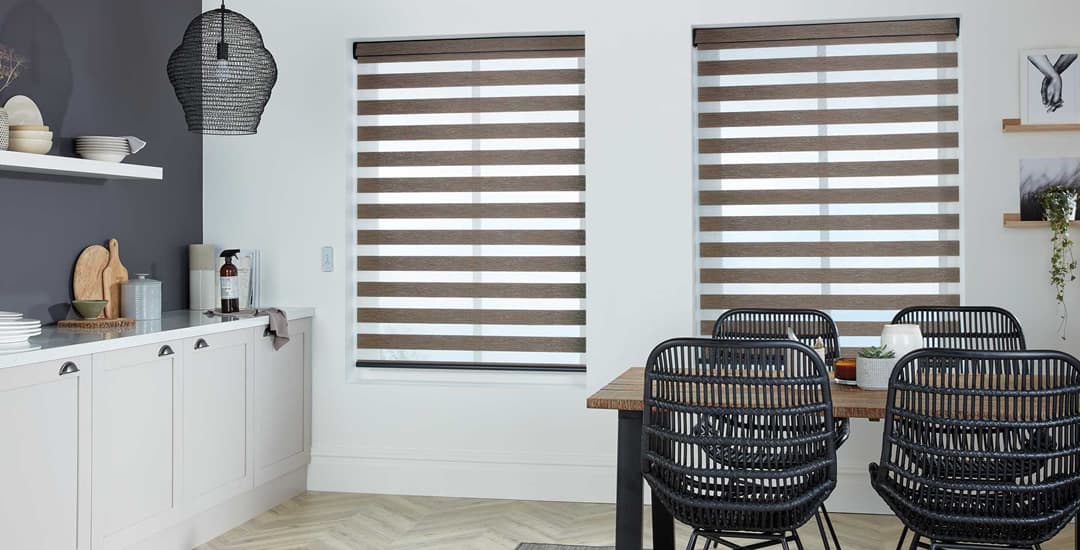
Day and night blinds as a whole are not made to be/sold as being blackout blinds; if you browse for or buy a regular day and night blind, it will not be nor claim to be a blackout blind.
Day and night blinds are what we call light filtering or dimout blinds; they block/dim external light to a degree that can be highly variable from blind to blind, sometimes resulting in a near blackout and sometimes barely taking the edge off the external light at all – but day and night blinds aren’t usually sold as blackout blinds.
Can you get blackout day and night blinds?
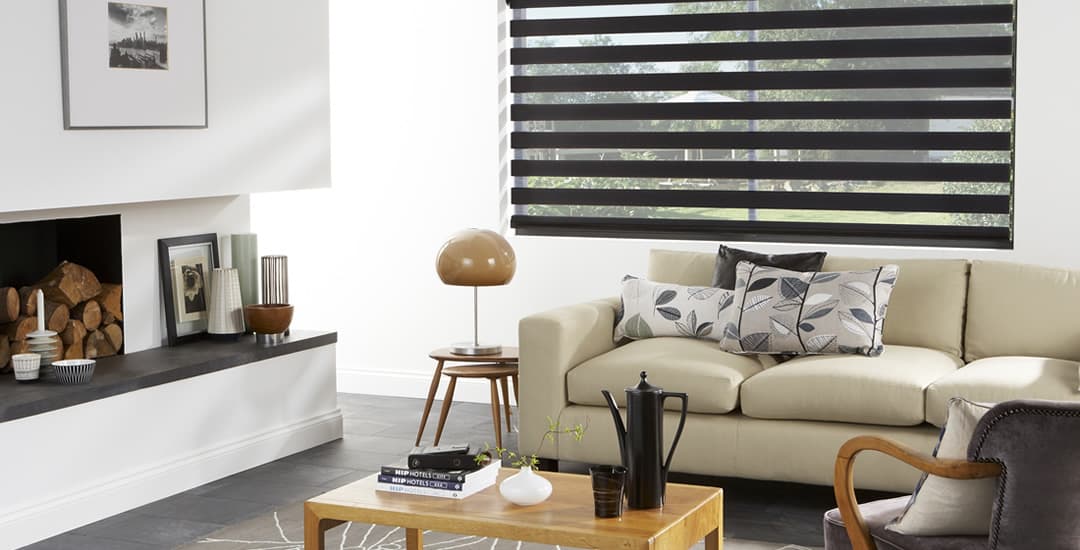
Can you get blackout day and night blinds? The technically correct answer to this is yes, because some retailers sell what they call “blackout day and night blinds.” However, because of the basic principles of how day and night blinds are made and how they function, they will never be able to achieve a 100% total blackout in the same way that other, true blackout blinds can.
This is because day and night blinds comprise of alternating horizontal stripes, one being opaque and one sheer; this latter being made of a type of net or mesh weave.
This means that even if the opaque stripe of a day and night blind was made of blackout fabric good enough to let no light through in that area, those sheer stripes are not and cannot be made in a blackout fabric whilst also remaining sheer.
The whole point of day and night blinds and what makes them unique is these alternating stripes, with the presence of the sheer one enabling you to preserve your privacy and negate glare from outside, whilst still allowing quite a lot of light to enter the room.
The fabric of a day and night blind is made in one continuous loop, which runs around tubes at top and bottom – and as you raise or lower the blind, the fabric revolves around this loop, moving the alignment of the stripes as it goes.
This means that you can line the stripes up in whatever formation you like, such as with the front and back of the loop matching exactly so that the blind forms uniform alternating sheer and opaque lines, or the stripes aligned so that they’re offset, forming a continuous block when viewed head on; or anything in between.
Folk that sell so-called blackout day and night blinds make the opaque stripe of the blind in a blackout material, and claim that when you align the stripes to create an uninterrupted block of the opaque stripes, this serves to produce a blackout effect. That’s the theory anyway. But what’s the reality? Are day and night blinds blackout if you align the opaque stripes into a solid sheet of fabric?
Are day and night blinds blackout if you align the opaque stripes in one uninterrupted block?
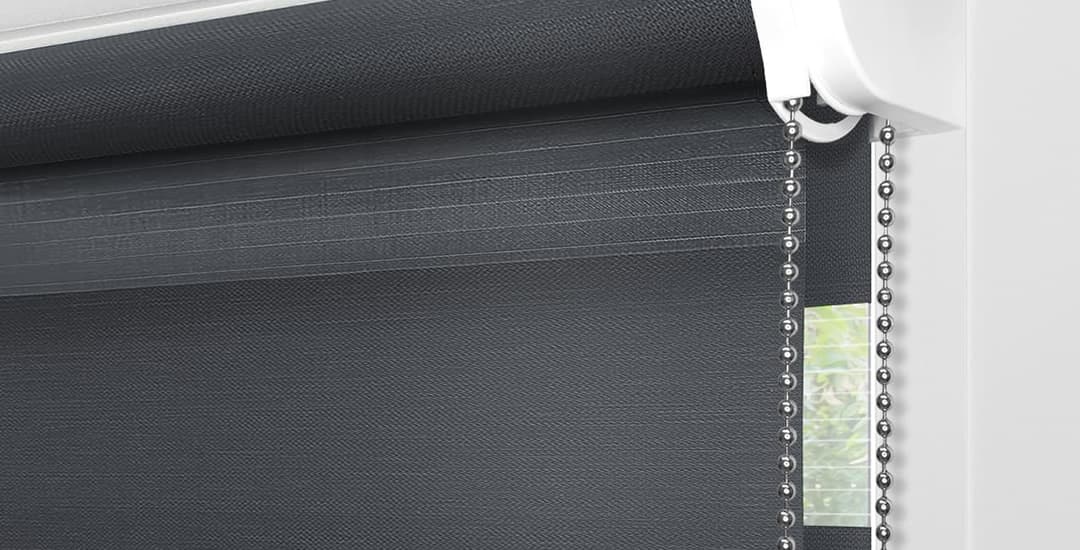
Ultimately, no. Not in terms of what most people deem to be “blackout.” If you’re looking for a blackout blind, the chances are that what you want is a blind that blocks effectively all external light (which, I have mentioned before, depends just as much on how you hang the blind as it does on the material it is made of).
Even if you align the opaque stripes of a “blackout” day and night blind so that they form one continuous block, there is a space between the blind’s front opaque stripes and their back opaque stripes, which means that the sun/light can get in through the diffuse sheer stripes in between.
This means that while a blackout day and night blind will block more light than a regular day and night blind (and there’s a possibility that such a blind will have slightly thicker/denser sheer stripes to help to support this too) it will not achieve the sort of total or near-total blackout effect that the average buyer of blackout blinds is looking for.
Do day and night blinds block out the light enough to let you to sleep?
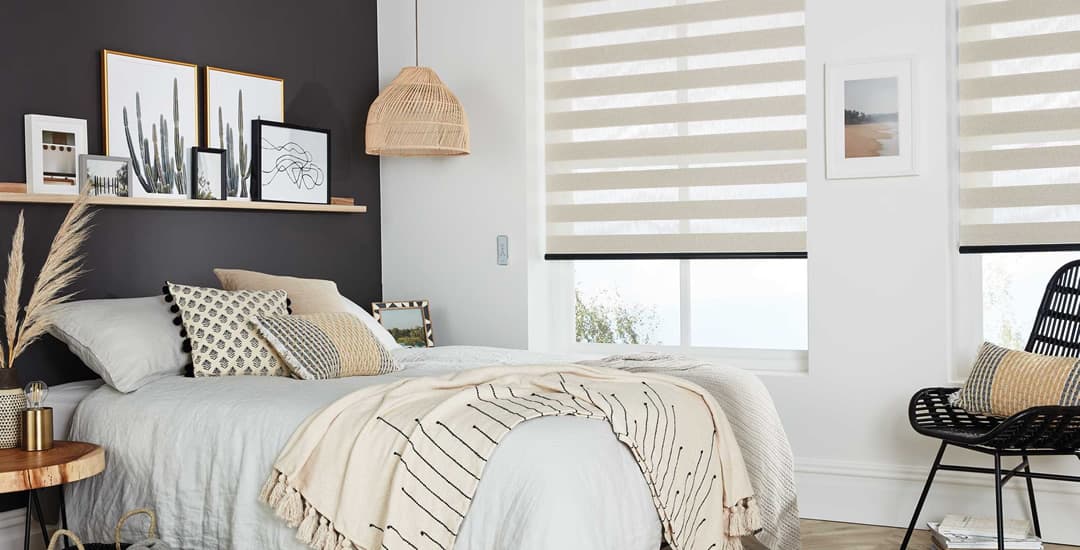
Ok, so if you understand that a blackout day and night blind doesn’t actually do exactly what is says on the tin, will it block enough external light to allow you to sleep, or fulfil whatever other purpose you wanted a blackout blind for anyway?
Well, this depends to a degree on the day and night blind, but those with the opaque stripes made of a reasonably dense fabric and aligned into one solid block will certainly darken your room significantly, and this may well be absolutely sufficient.
Ultimately though, the answer to this question depends on you. Many people actually prefer dimout blinds to blackout blinds for bedrooms, both in terms of how well they allow them sleep and how challenging or otherwise they find waking up.
I covered all of this and the various options/solutions in this blog post, so if you’re not sure if you need need blackout blinds and/or if a set of day and night blinds or other dimout blinds would block enough light to let you sleep, that should be the next stop in your quest for knowledge.
…And if nothing else, spending too long reading a blog about blinds will probably put you to sleep anyway, so win-win!?
Do day and night blinds block out the light if used in combination with another blind?
If you are a regular reader of the English Blinds blog (sooner or later somebody will be) then you may have happened across my prior post on how to achieve a full blackout with blinds.
For everyone else, go and have a quick look now, and you will see that I advocate for using two sets of blinds rather than one if you’re deadly serious about not doing the whole sunlight thing.
This involves hanging one blind inside of the window recess and another over it, with this latter blind covering the surrounding wall on all four sides by a margin of at least 10cm.
Now, if you were on board with doing this and you used a day and night blind as the blind inside of the window recess and a true blackout blind as the one on the outside, then aligning the stripes of the day and night blind into a uniform opaque block before closing the second blind over the top would be 99.999% sure to achieve a total blackout.
That, however, is about the only way to swing it; getting your day and night blind a pal to handle the heavy lifting.




